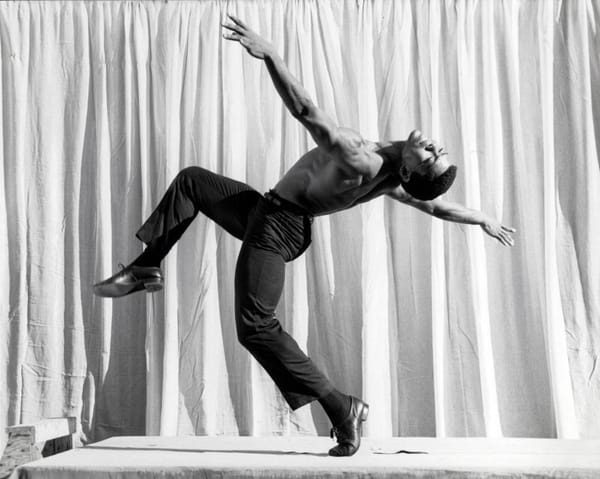Un-Monitored: Some Final Thoughts about Heart Rates and Fitness Technology

I had a nice little editorial calendar pulled together, with a plan for what to write and when to publish, that would take me all the way through the end of April. But then I went and decided to lean fully into my Luddite tendencies, ditching my Garmin and upending my intentions to test and analyze various fitness technologies. So things are, I confess, a bit of a mess here as of late. It doesn't help that, on Saturday, I ran 13.1 miles — a distance for which I am not well-trained at the moment — and then volunteered for 7 hours at the NYC Half Marathon, distributing water to 27,000 runners. Today's newsletter, I warn you, is very jumbled.
I was poised this month too to wrap up my series of stories about heart-rate monitors (parts 1, 2, 3) with a look at my own experiences using one – the one on my watch as well as chest strap. You’ll just have to trust me when I say that my conclusion was going to be “listen, don’t worry so much about the data,” even before I decided to actually listen for myself and not worry so much about the data.
I’ve run for two weeks without a watch now. No tracking via Garmin. No posts to Strava. No updates to Training Peaks. I jot down my thoughts in my (paper) fitness journal, but I can’t really say how far I’ve run. (Saturday's 13.1 miles, the exception.) And as I haven’t been wearing any watch and as I keep forgetting to look at my phone before heading out the door, I’m not certain either how long I’ve been out there. I can guess, of course. I have a route that I run regularly, and I know roughly when I’ve crossed mile markers -- my watch was once set to vibrate at ten minute and at one mile intervals, and (somewhat) like Pavlov’s dog, my body has been sufficiently conditioned to respond even when the “bell” is removed.
Or has it?
On my first few watch-free runs, I found myself trying to calculate time and distance in other ways — like, how many songs had I listened to (and, thus, based on average song length, how long I’ve run)? This was largely unsuccessful, partly because there’s a huge variability in length among the songs on my running playlist. “Fortunate Son” is two and a half minutes long; “Paradise By the Dashboard Lights,” almost three times that length; The Beastie Boys’ “Intergalactic” is less than four minutes even though it feels like it goes on for-fucking-ever. But even before I could attempt to do the math in my head, I found I struggled to recall how many songs, which songs I’d actually just heard.
That said, I did find this was a pretty good way to occupy myself mentally for a good chunk of time -- better than spirally out about whether or my knee felt better or worse or about the same. And better too than that terrible habit of always glancing at my watch to see how far, how fast, how long, what heart rate zone I was in.
Just a few months after I bought my Garmin, I bought a heart rate monitor -- a strap that fits quite snugly around my chest, under the boobs with the monitoring device sitting right below my sternum. Even though the Garmin tracks heart rate -- and tracks it quite accurately for most people, I should add -- it did not work consistently for me. See, I have tattoos on my forearms, and the ink interferes with its optical scan. As such, the watch would often give me incorrect readings, particularly if I wore it at night. (This problem was even worse with the Apple Watch which would simply shut off during a workout, assuming that, if it could not sense my heart rate, I was done exercising.) And if the watch couldn’t track my heart rate at night, it would assume I hadn't sleep at all or had only slept a few hours and as such would sternly advise me that, according to the algorithm, I probably shouldn't run.
The Garmin chest strap only functions during a workout – it didn’t address the “problem” with monitoring my sleep patterns. But at least it did make sure that I had a consistent reading of my heart rate during my runs. The chest-strap also gave some additional metrics — vertical oscillation, time on each leg, for example — that up until a recent software update, the watch did not track.
Aside: there are (at least) three questions we should ask about data we track -- for health purposes or otherwise:
- Is it accurate?
- Is it meaningful?
- Is it actionable?
I’m not sure that we can answer “yes” to these to the extent that would make the data-tracking as necessary as the fitness technology industry would like us to believe.
If there is one useful thing I can say that I gleaned from the heart rate monitor, it’s that it allowed me to do its version of a lactate threshold test – Garmin requires a chest strap for this – so that I could more accurately set my heart rate zones for training. (A lactate threshold test measures the heart rate at which lactate begins to rapidly accumulate in the bloodstream. Note: what Garmin offers with its chest strap is not, in fact, a "real" lactate threshold test which involves drawing blood. See my aside above.) Regardless, this pseudo-test was arguably better than the pre-set information on the watch. The Garmin and other devices, as I noted before, tend to use your age to ascertain your max heart rate and thus your zones – and this, depending on your fitness level, can be wildly inaccurate.)
With my watch and my chest strap, I "knew" when I was running in “Zone 2.” (Note: ha.)
The idea of training zones has been around a while, but “zone 2 training” has been popularized lately in part by all the bro-science podcasters and fitness influencers who tout its efficacy, particularly for endurance sports: the vast majority of one’s workouts should be in “Zone 2,” that is, about 60-70% of one’s maximum heart rate. (I mean, sports scientists say this too, but these ideas have jumped from conversations among athletes and coaches on how to maximize one’s performance to a training framework that everybody is supposed to dutifully follow.) One is supposed to eschew Zone 3, "the grey zone," which is deemed unproductive for increasing fitness. (Note: not true. Or rather, not that simple. But makes for a nice story/algorithmic recommendation.)
Admittedly, I have a hard time staying in Zone 2. I like running fast, and my ego and my body often urge me to run more quickly. I’m a fairly new runner too, and certainly when I picked up this sport two years ago, was not in great cardiovascular shape: my heart would pound with the exertion of a very slow jog. But after a while, things got easier -- I could run longer and faster. (My heart rate, I found, could go even higher, much higher than what my watch said was my max.)
By keeping our exertion level in Zone 2, we supposedly take advantage of a number of physiological processes that occur at that level of exertion: mitochondria grow, type 1 muscle fibers are stimulated, lactate is cleared from muscles, fat (rather than glycogen) is burned for fuel. You don’t get as tired. You don’t get as sore. Your body adapts, ideally without injury, and your endurance improves.
"Supposedly."
Your watch doesn’t know your max heart rate. It doesn’t know your zones. Zones aren’t actually that rigidly delineated anyway. All that is to say, you don’t need your watch to tell you if you’re in Zone 2 or not.
You can use the “talk test,” for example. That is, if you're in Zone 2, you should be able to hold a conversation, to speak in complete sentence – with your running buddy or yourself. (Complete sentences. Not just one word responses while gasping for breath.)
On Saturday, I ran 13.1 miles, the longest I’ve run since my last half marathon in October. I wore my watch as I needed “proof” that I’d run the distance -- uploaded to Strava to get credit for the virtual NYC Half Marathon, a screenshot sent to the Oakland Running Festival to get credit for the virtual Oakland Half.
When I strapped the Garmin to my wrist, I immediately changed the alerts -- no notifications about pace or time, thank you very much. It was a gorgeous morning, but I wore long sleeves to cover the watch. I didn’t want to look at it. I knew I had to run a certain distance, but I wanted to mostly run by “feel.”
It felt a lot like my other half marathons: the first four or five miles felt amazing. The next four or five, less so. At mile 10, I perked up, telling myself “only a 5K left.” At mile 11, two miles might as well have been two hundred. The last mile and a bit felt pretty awful. But I did it.
I recently heard someone say that much of the fitness information that’s available is really geared towards the “1%,” and frankly, she quipped, “you’re not that fit.”
Harsh, but fair.
I’m not echoing her to suggest you or I are not athletes. If you’re training your body in any way, even if it’s not for a competition, I’d say you are. But we are not elite athletes. Or, at least I’m not. I’m pretty fast for my age, sure sure. But I’m just not that fast. I’m not that fit.
There’s a growing sector of the fitness (technology) industry, however, that really wants us to envision ourselves as such — or at least as the kind of consumer that is willing to buy the gadgets that are promised to get us there. Indeed, the industry spends a lot of effort getting us to fret over “optimization,” a process that might help elite athletes eke out a fraction of a percent better performance – all that’s needed sometimes to win a medal. But in doing so, in emphasizing optimization, it’s lost sight of (or never cared, is more accurate, I reckon) how to help the rest of us. Those of us who might most need some basic support and guidance. The industry tries to sell us “athletic greens” and tart cherry juice extract and beet root powder and other supplements when most of us would do better just by eating a balanced diet comprised of mostly non-ultra-processed foods. The industry tries to sell us on “recovery” products and services like massage guns and ice baths when most of us would be better served by getting a good night’s sleep every night. The industry tries to sell us new workout routines and workout equipment when most of us need to just move with some more consistency, with some more intensity. Of course, the reasons we don’t eat well, sleep well, move a lot are systemic; they’re not gaps in the gadget or app market.
Fitness technologies sell us practices (and, of course, products) of optimization when most of us would find our health is better served by simply eating and sleeping better and moving our bodies more. They sell us an ideology of quantification when what we are probably wanting to improve isn't a number, but our well-being.
I’m not going to go back to wearing a fitness watch. Not right now, at least. I'll have more to say about how I plan to train without it. Or maybe I won't. Maybe I'll actually write about ed-tech again. Haha. I'm kidding. Sometimes, you just can't go back. Sometimes you have to.
Thanks for reading Second Breakfast. Please consider becoming a paid subscriber and supporting my efforts to push back against the stories we're told that the future is necessarily a digital product.





